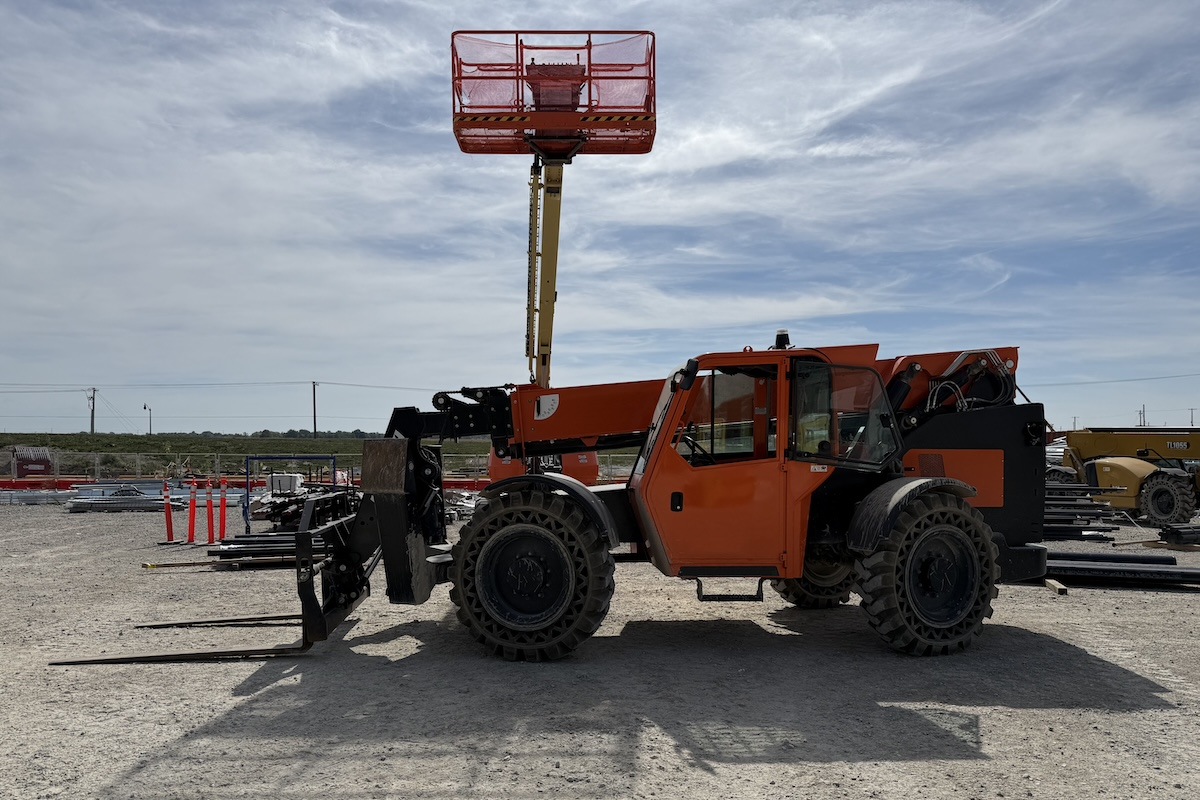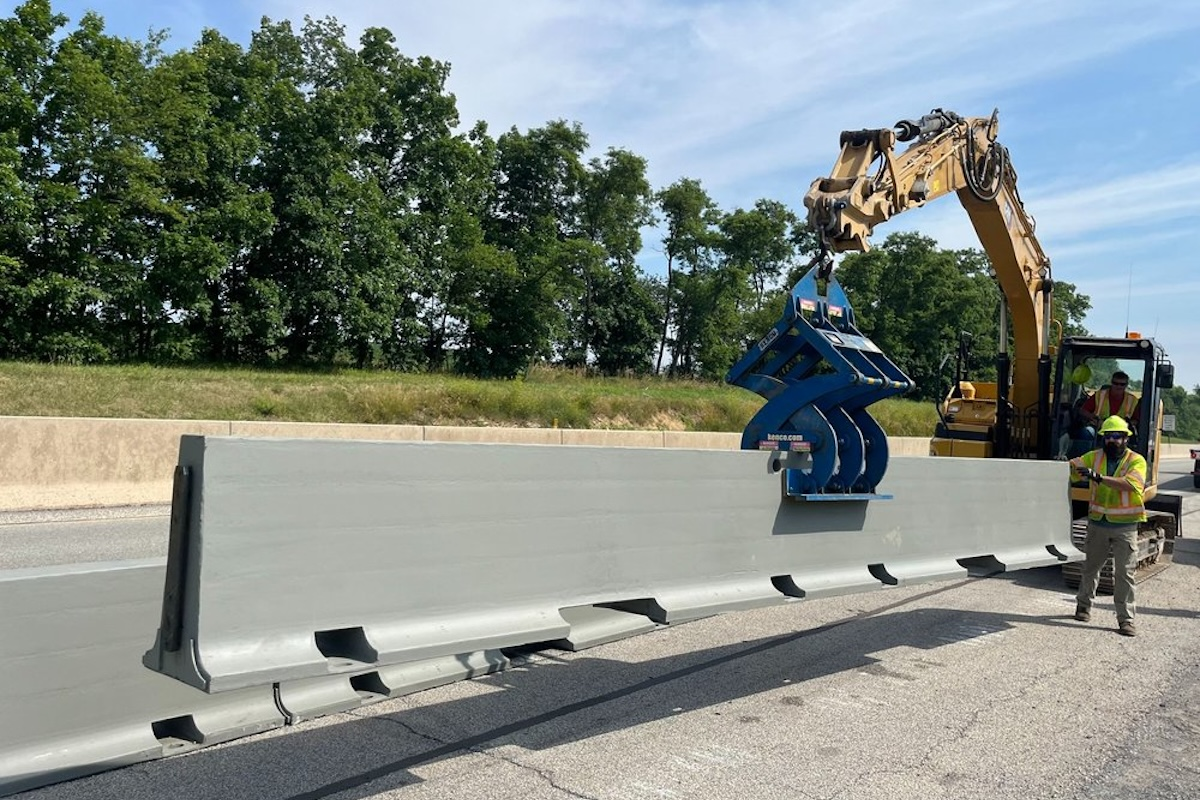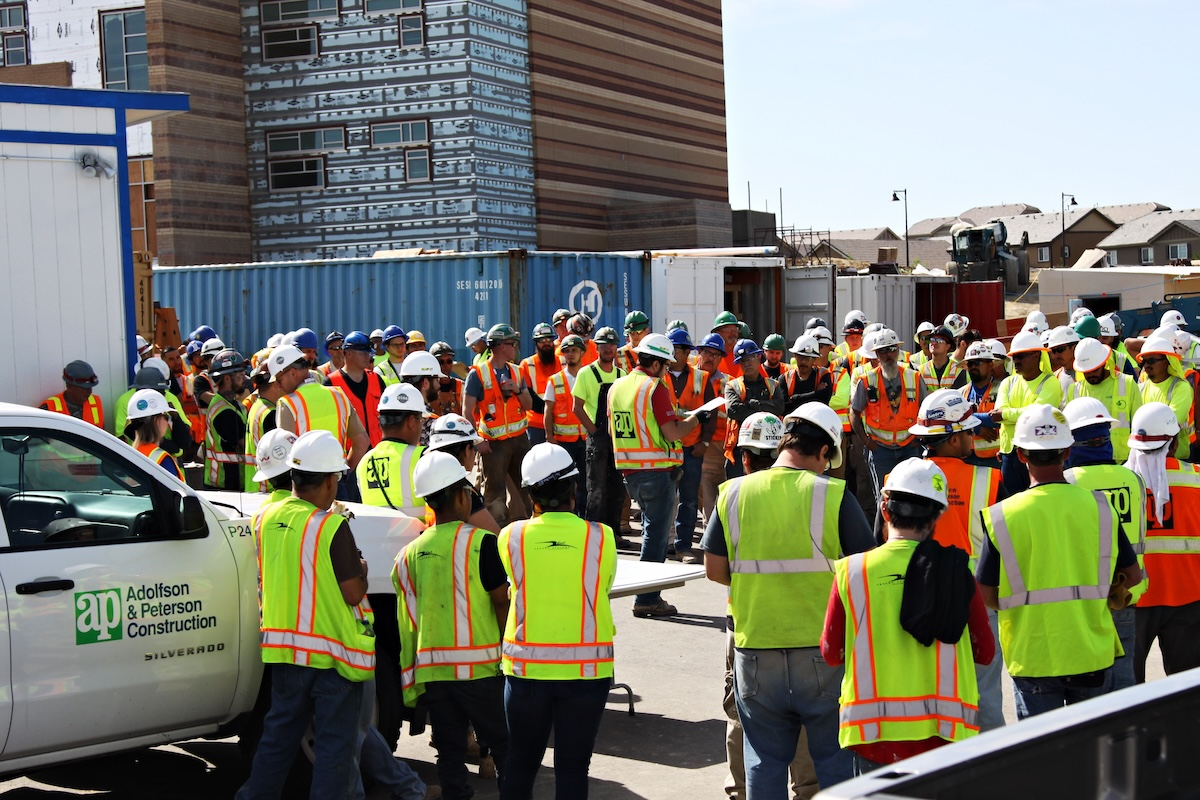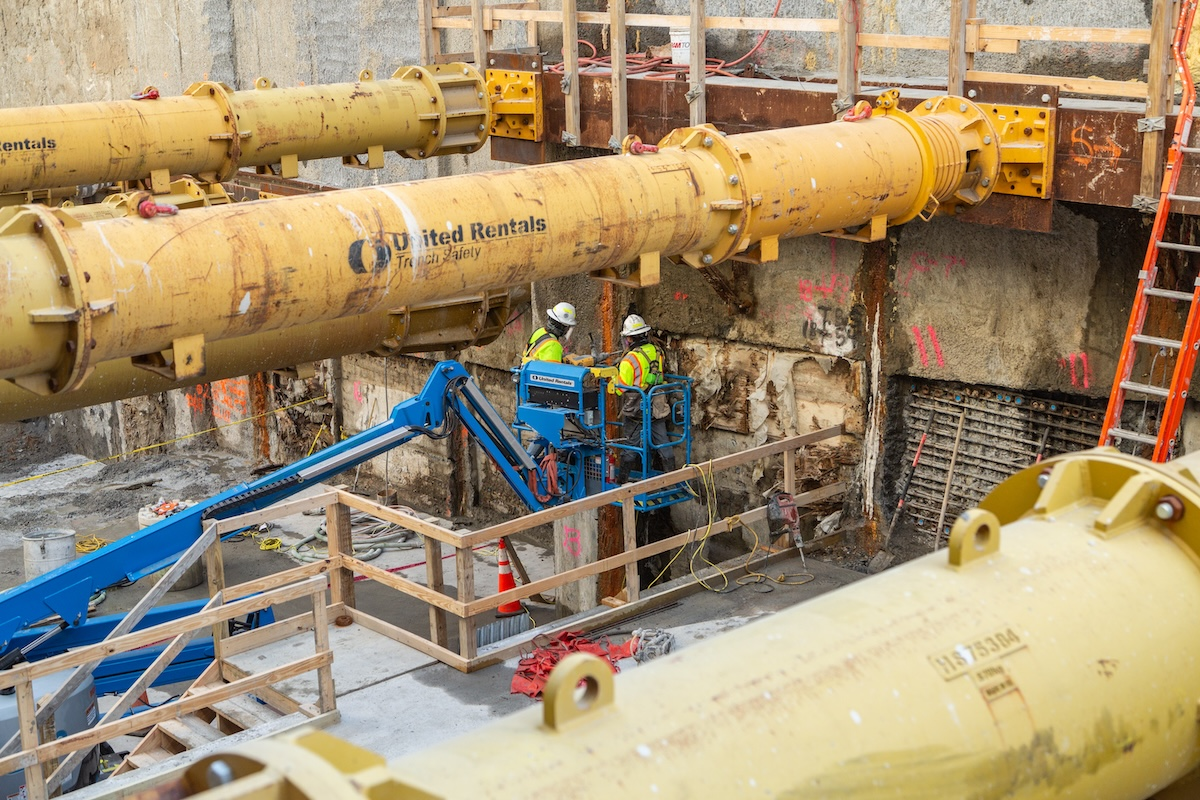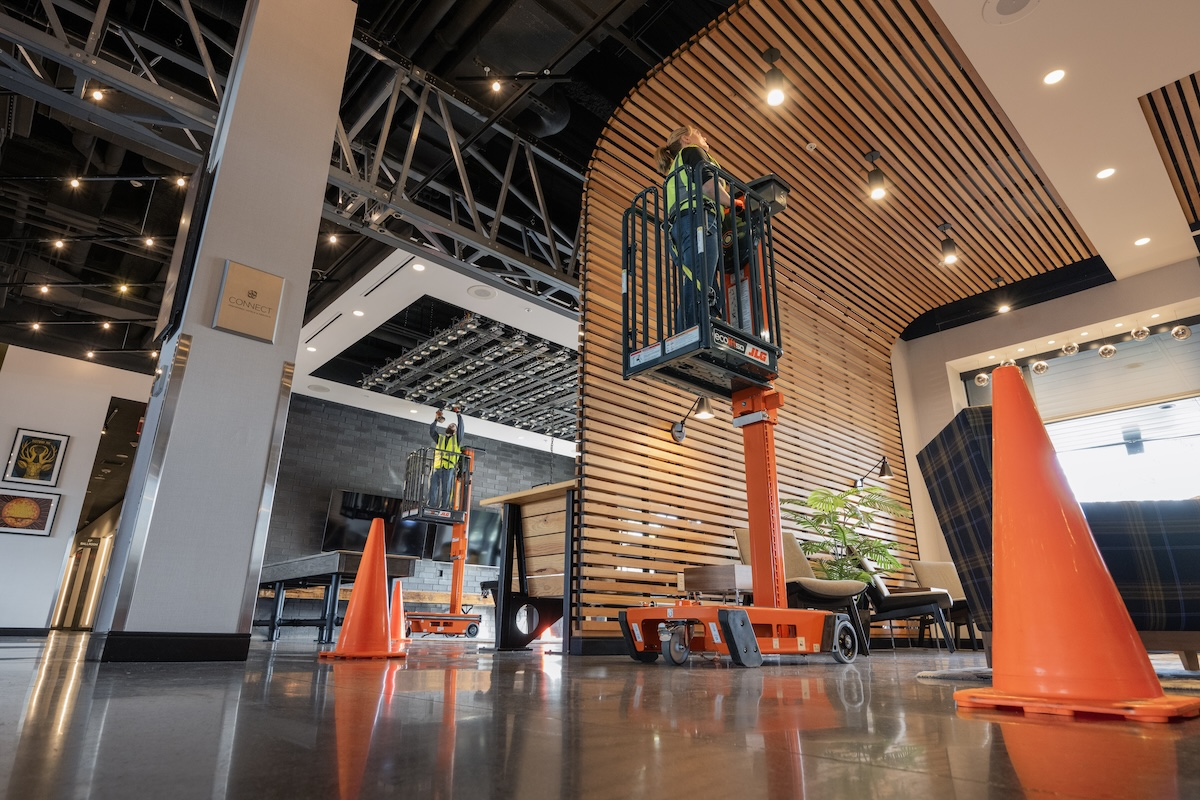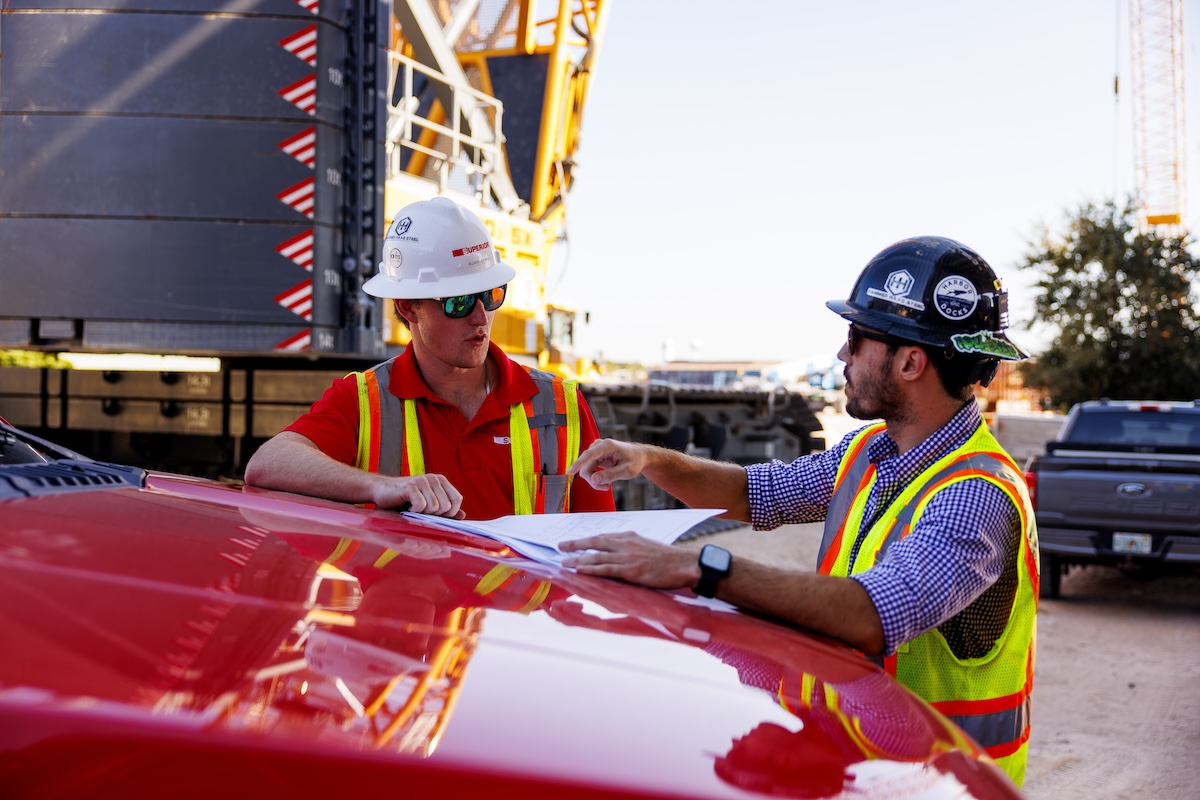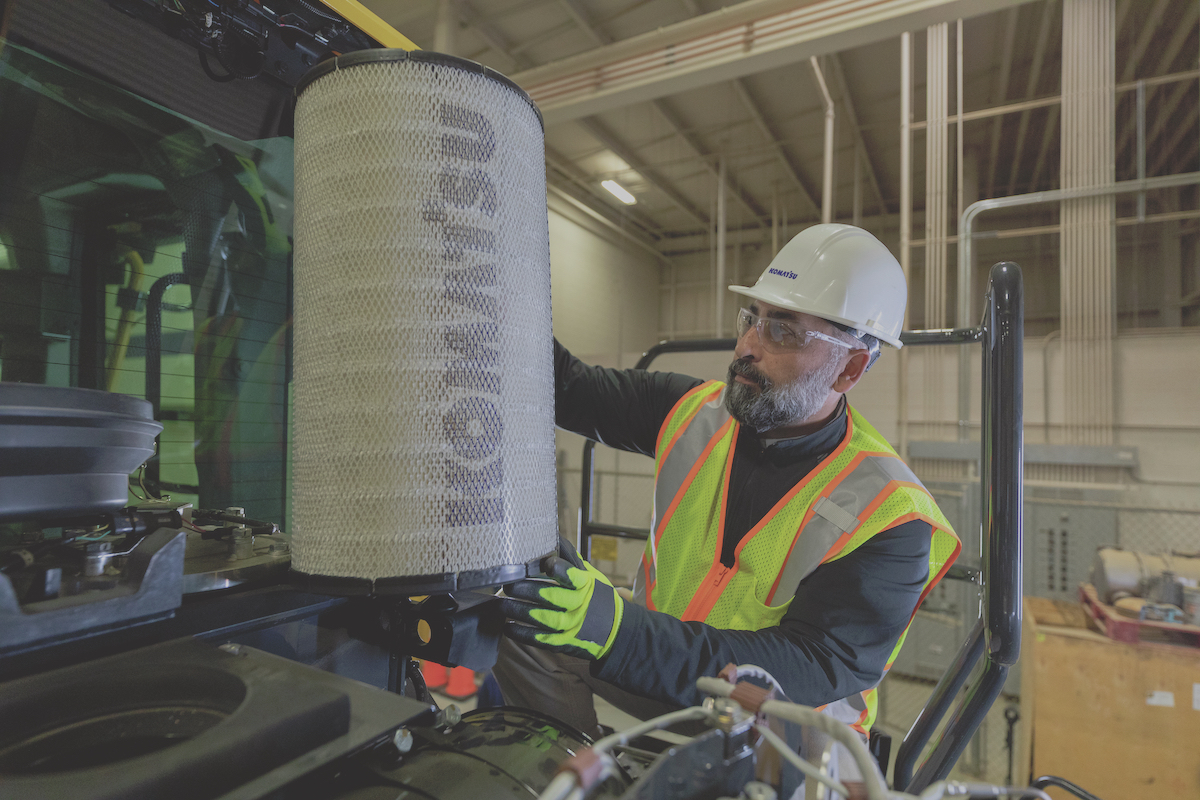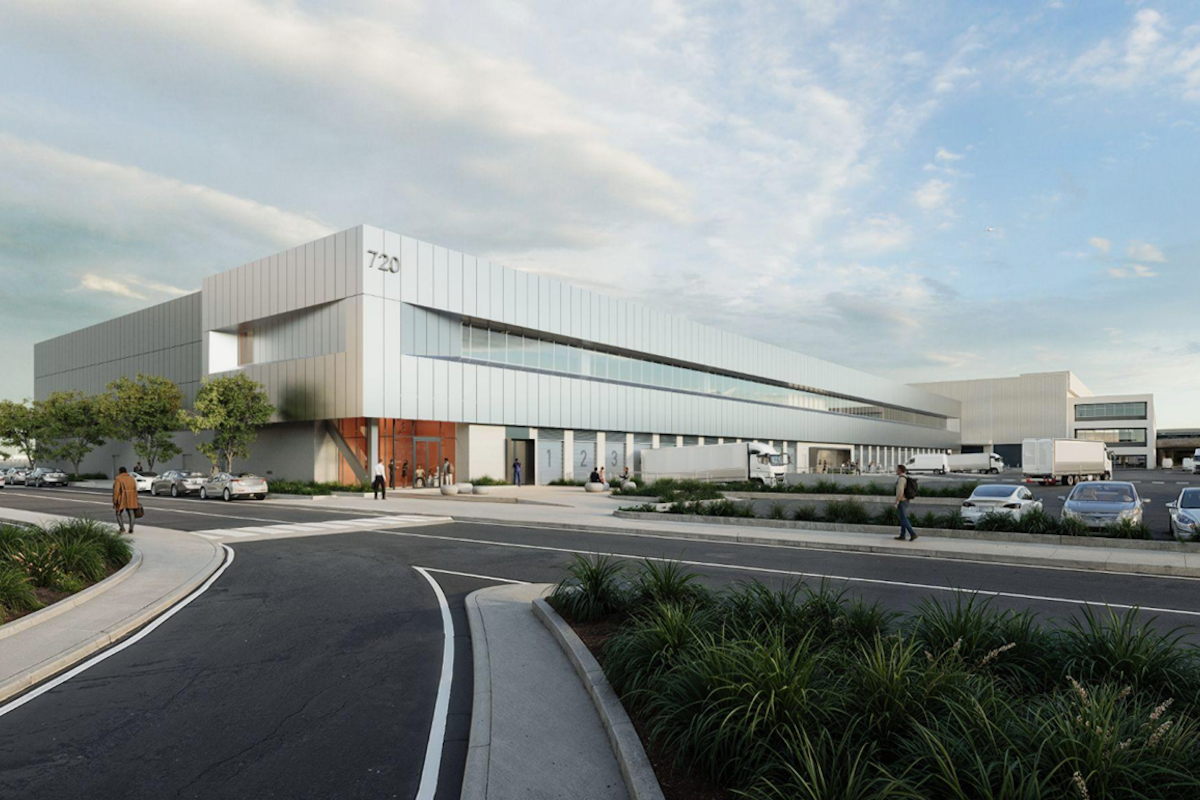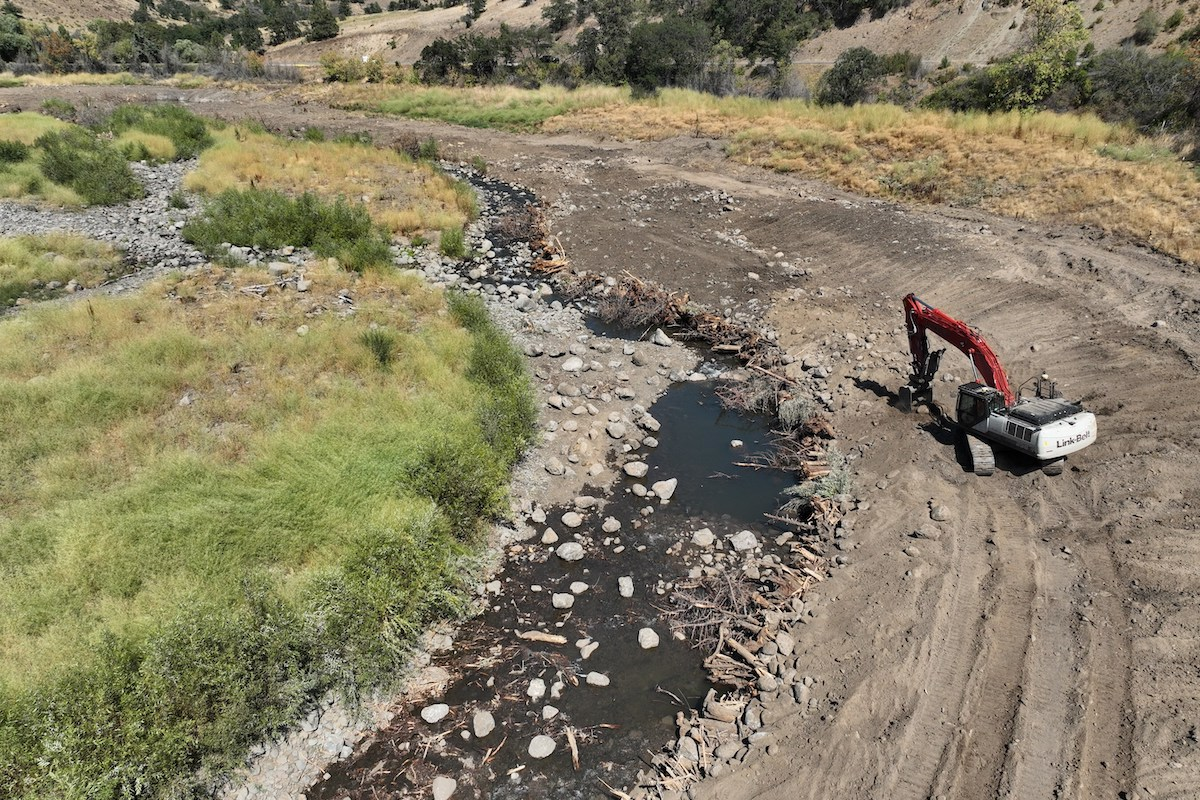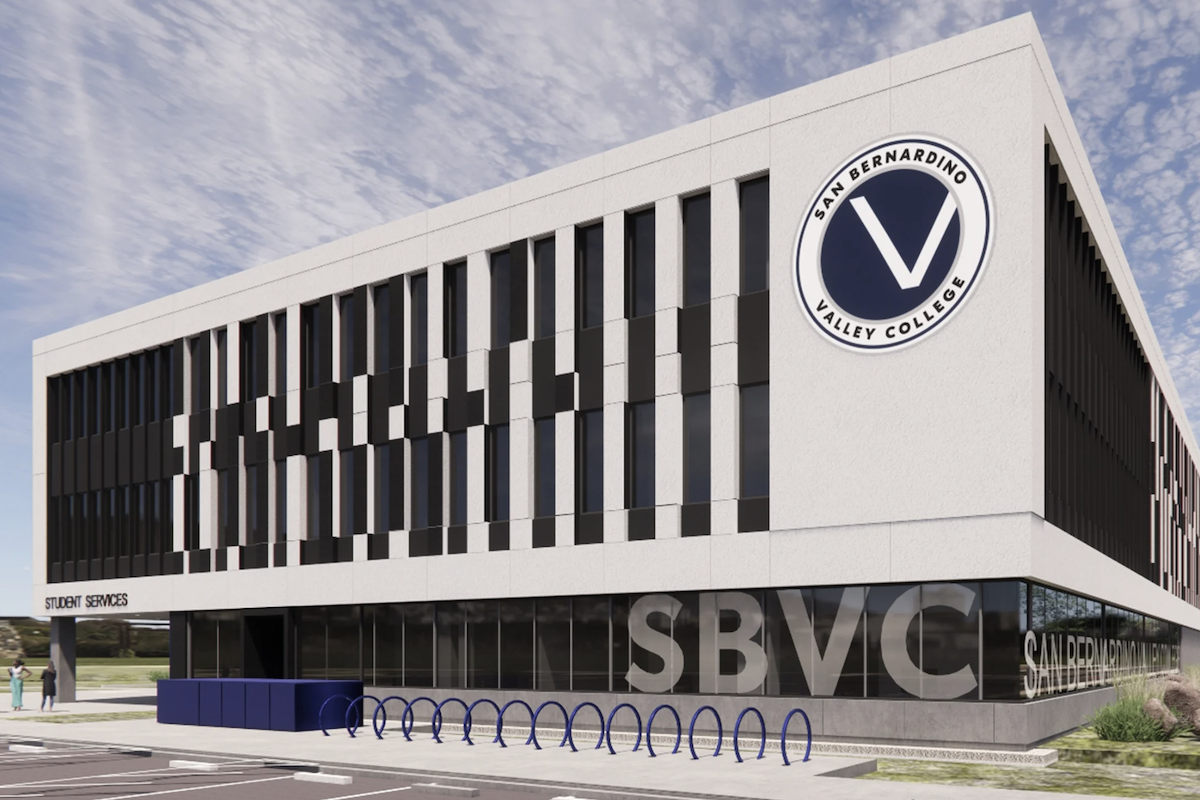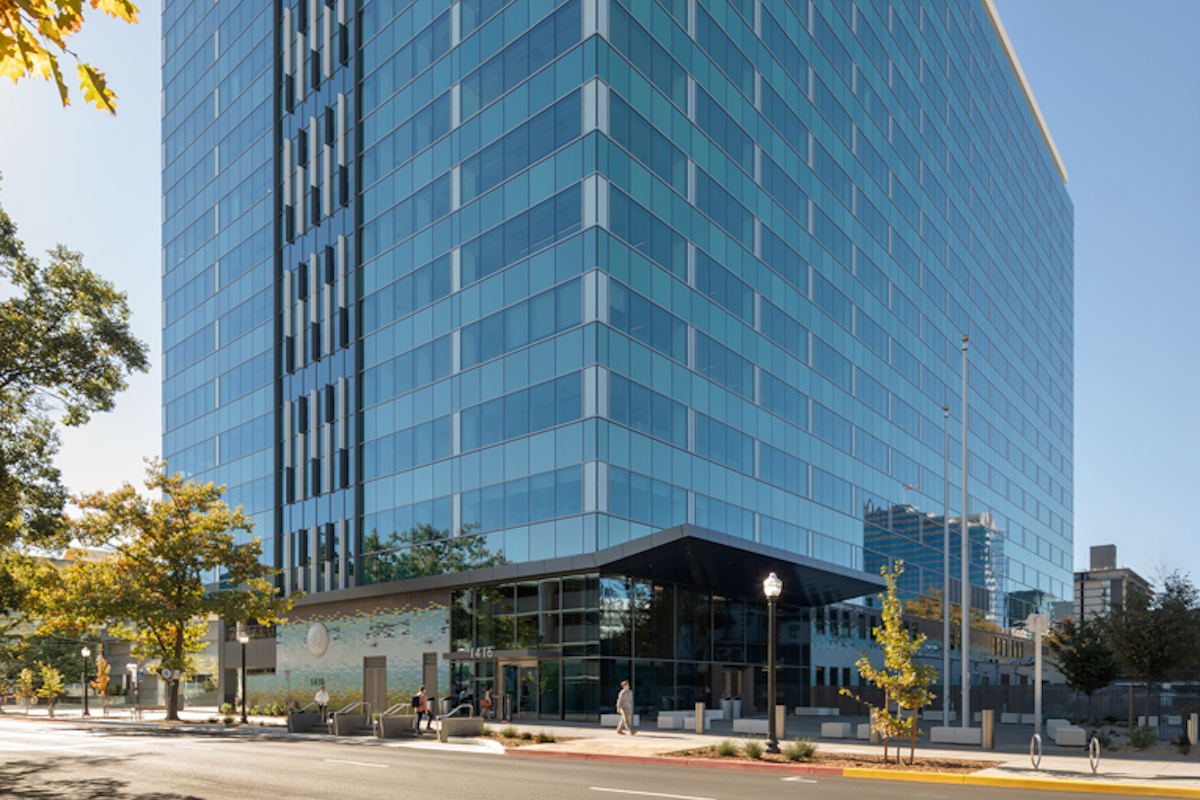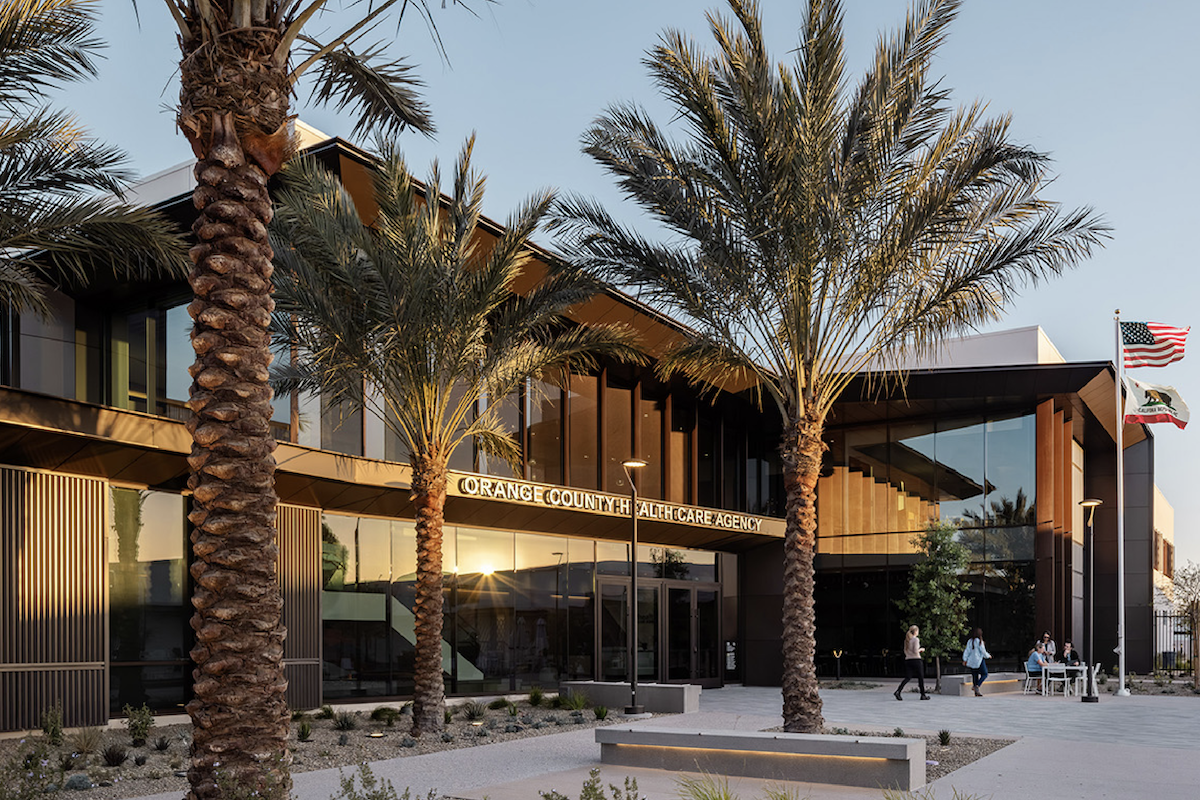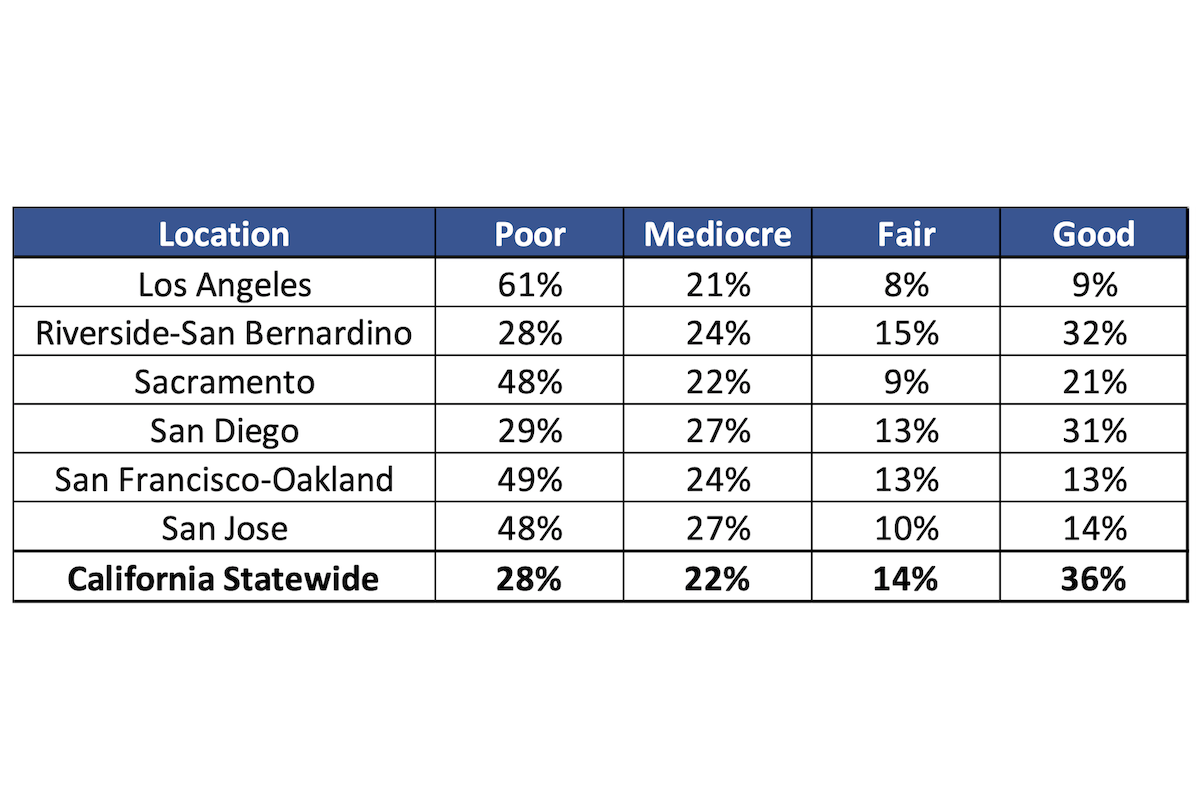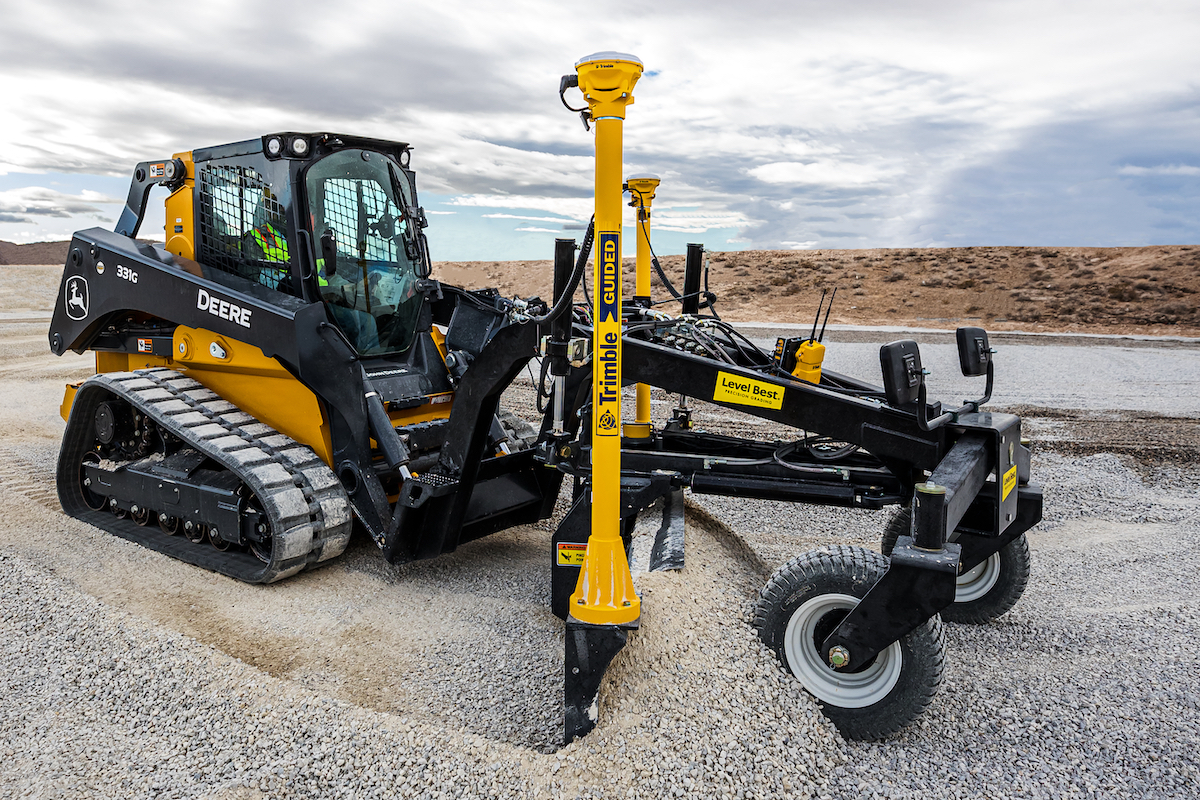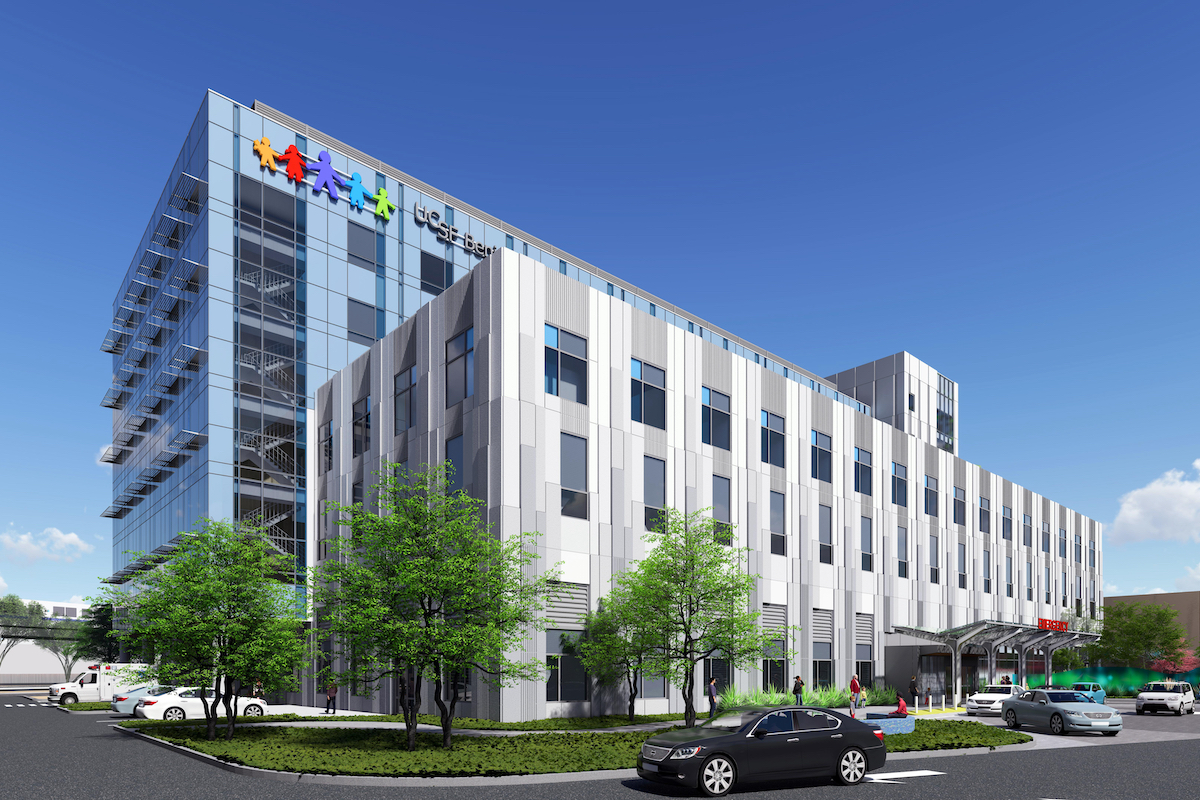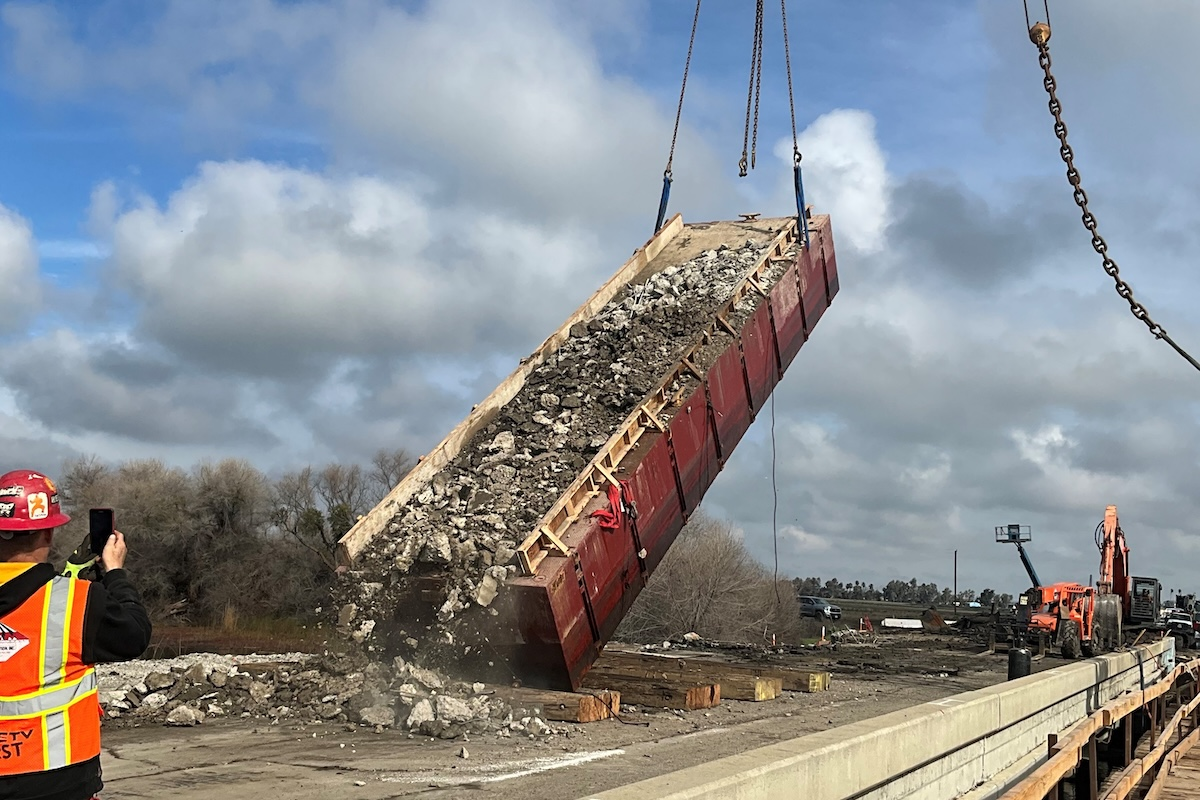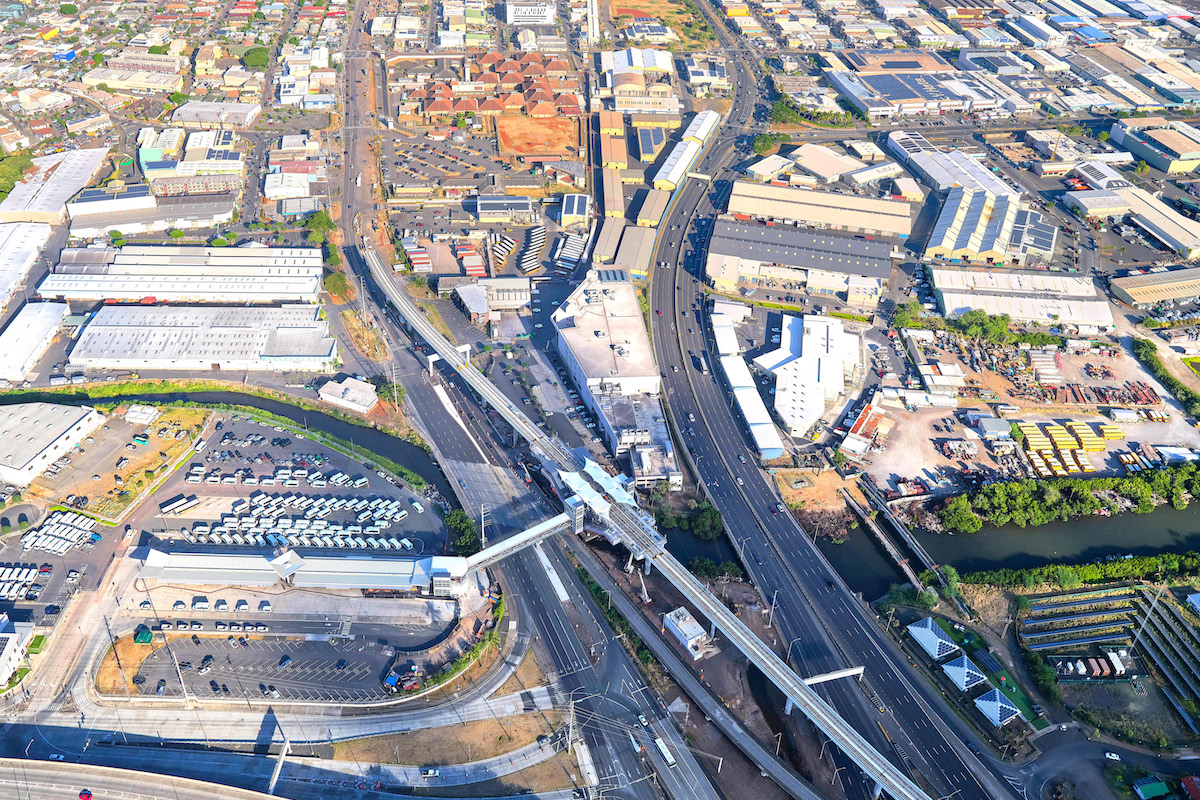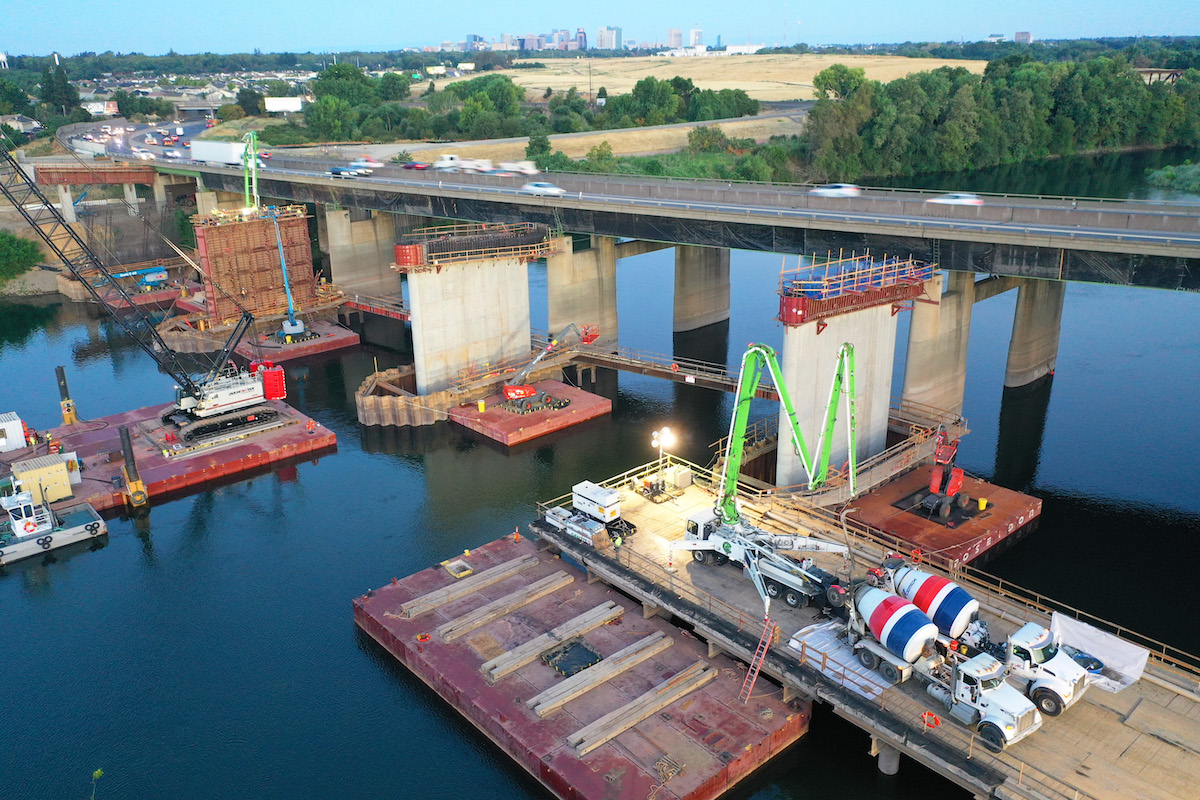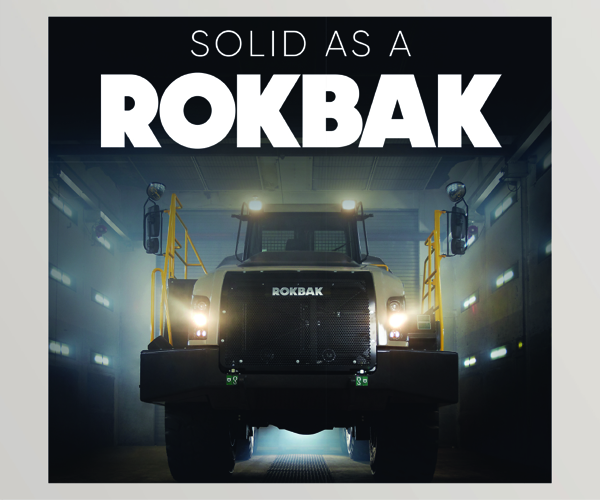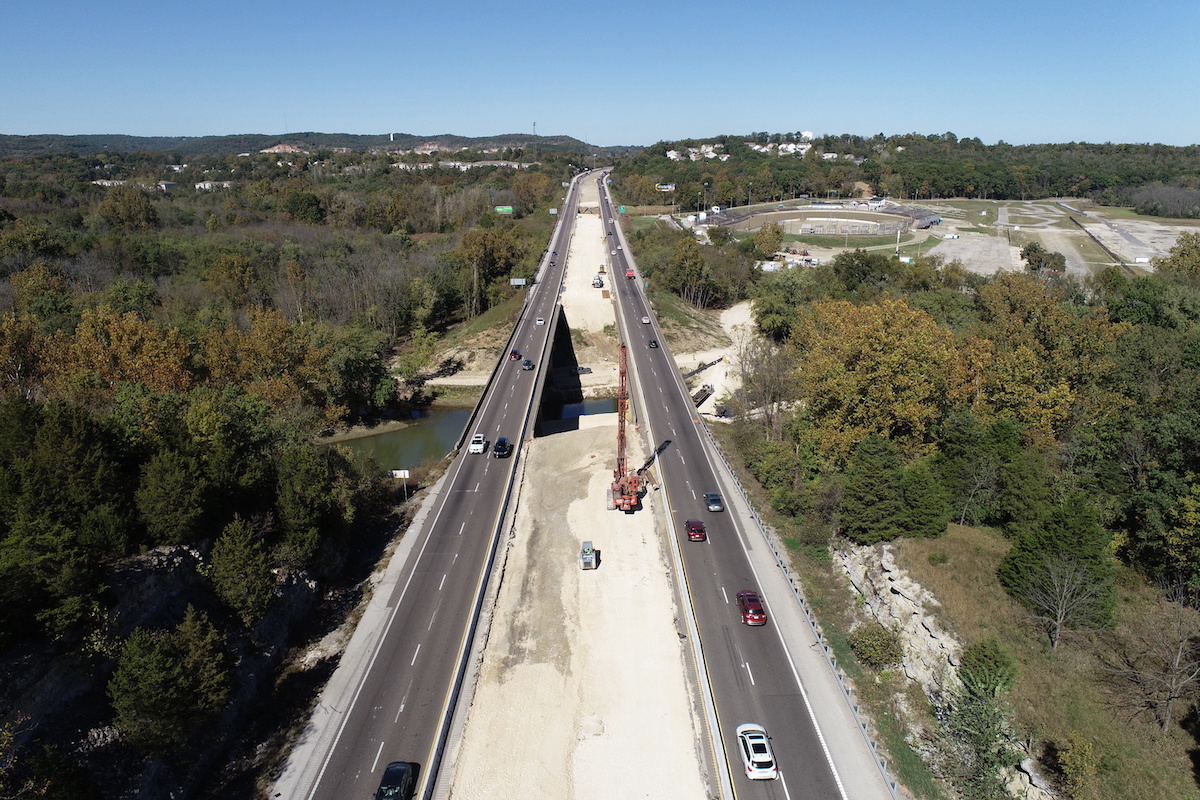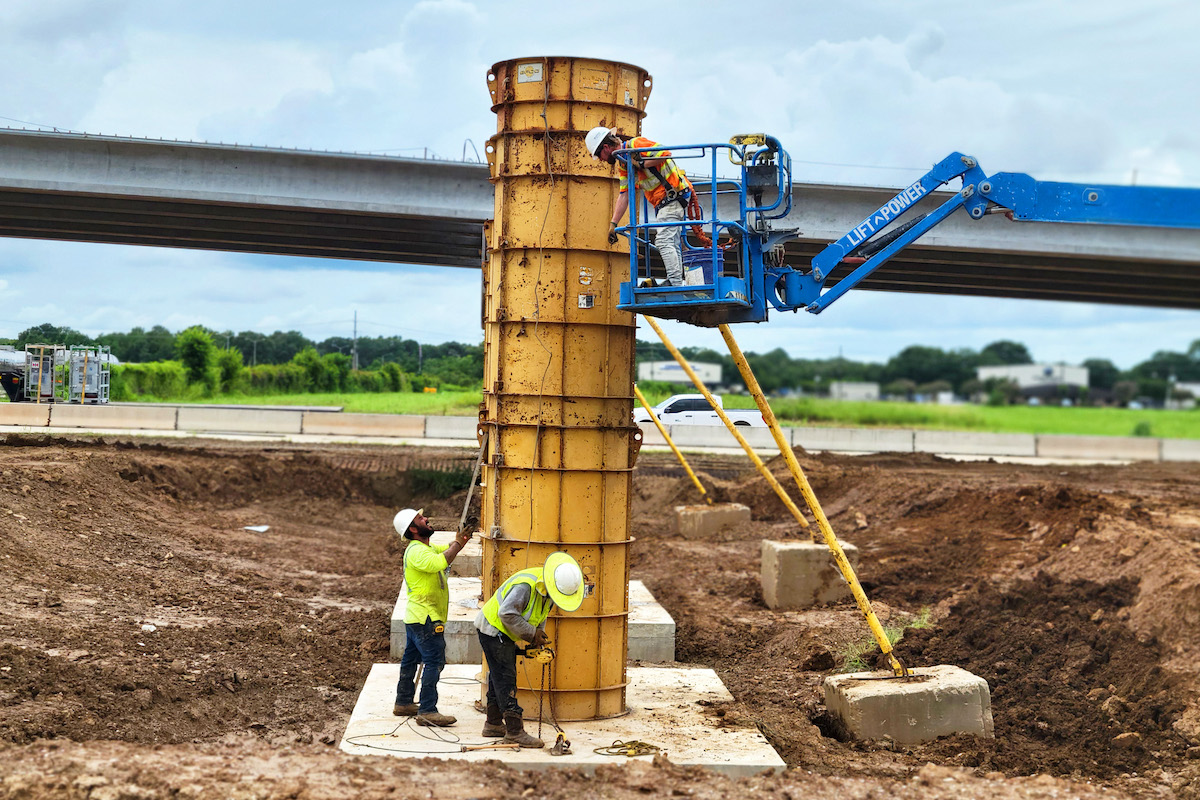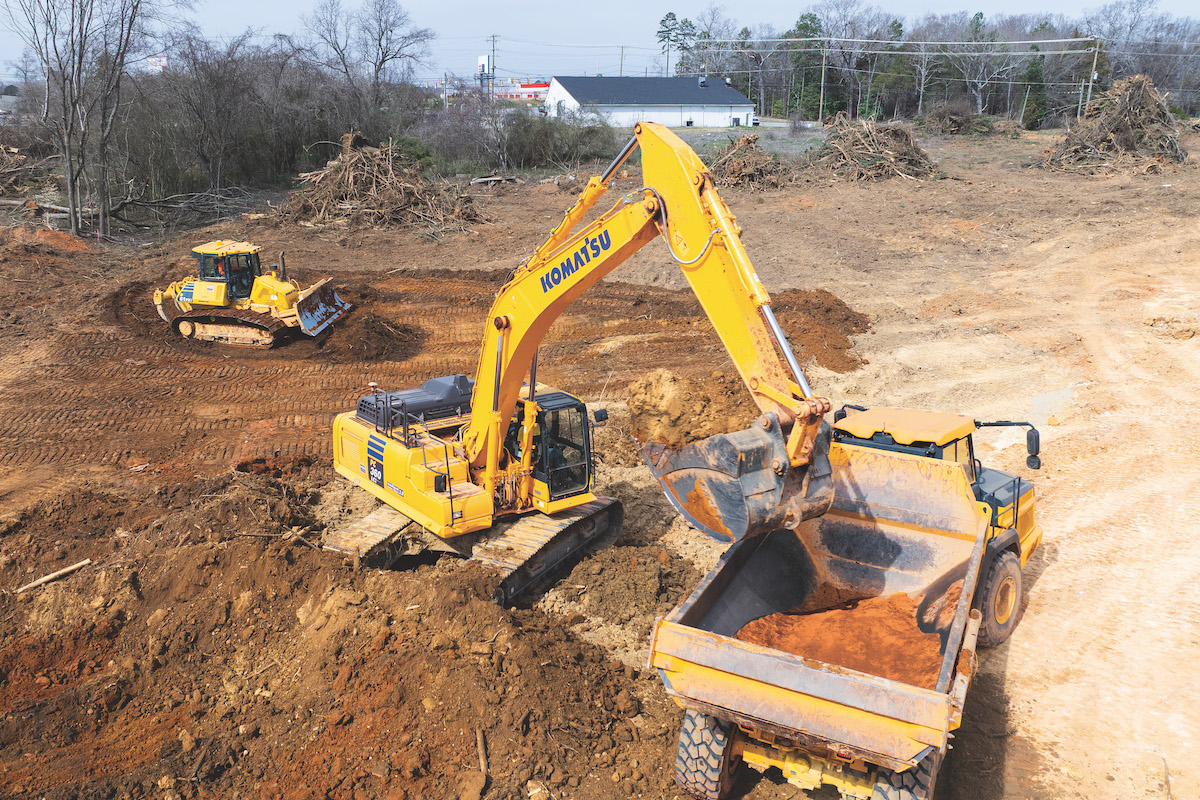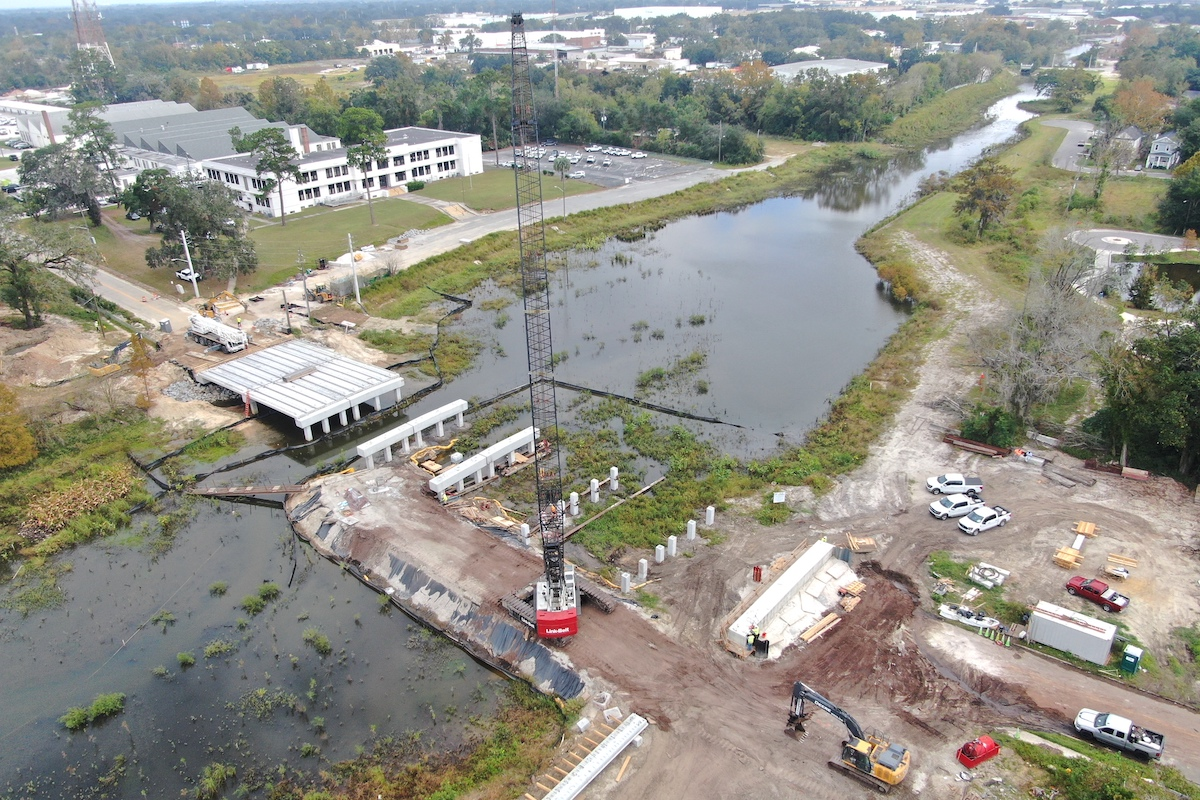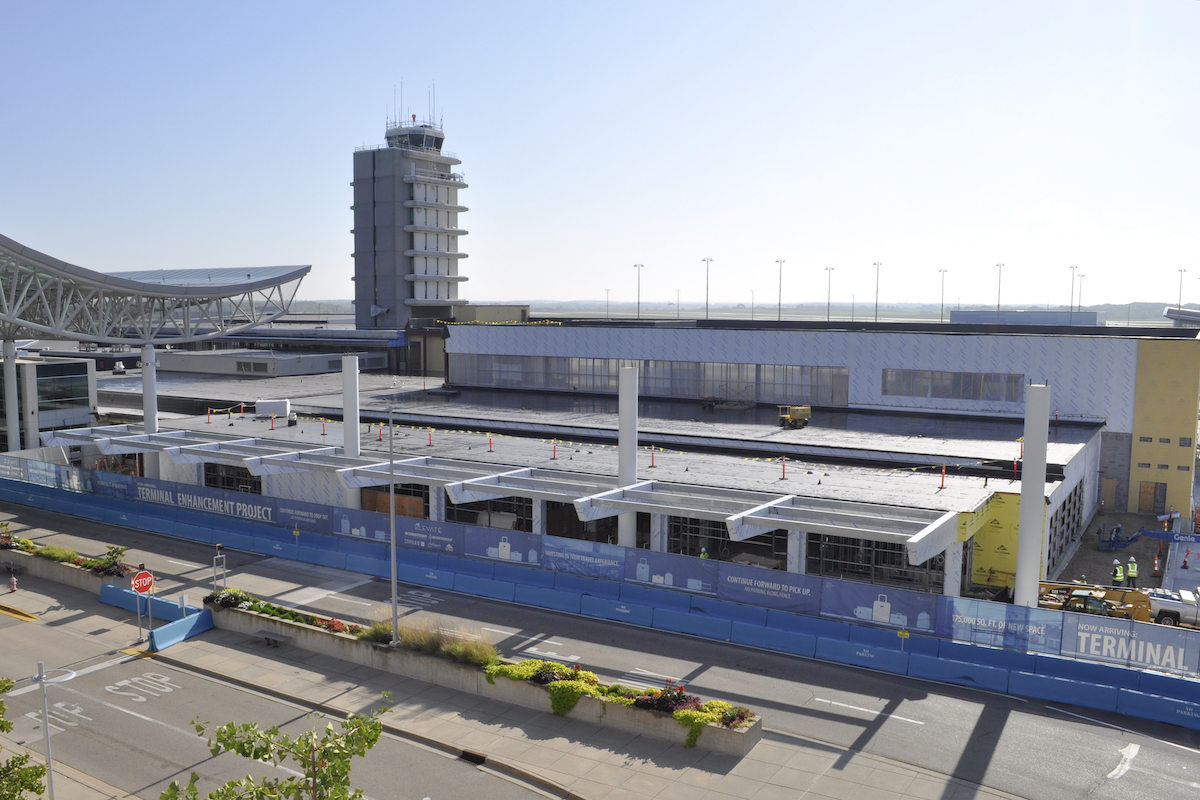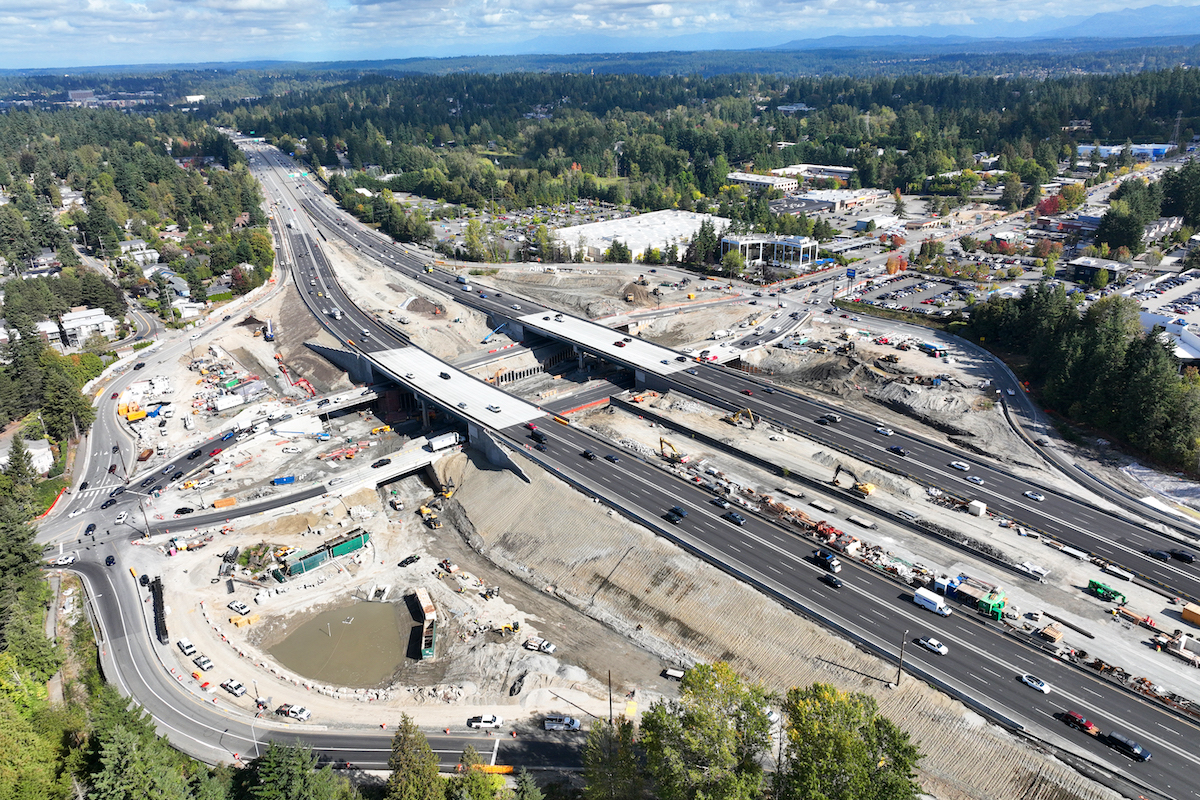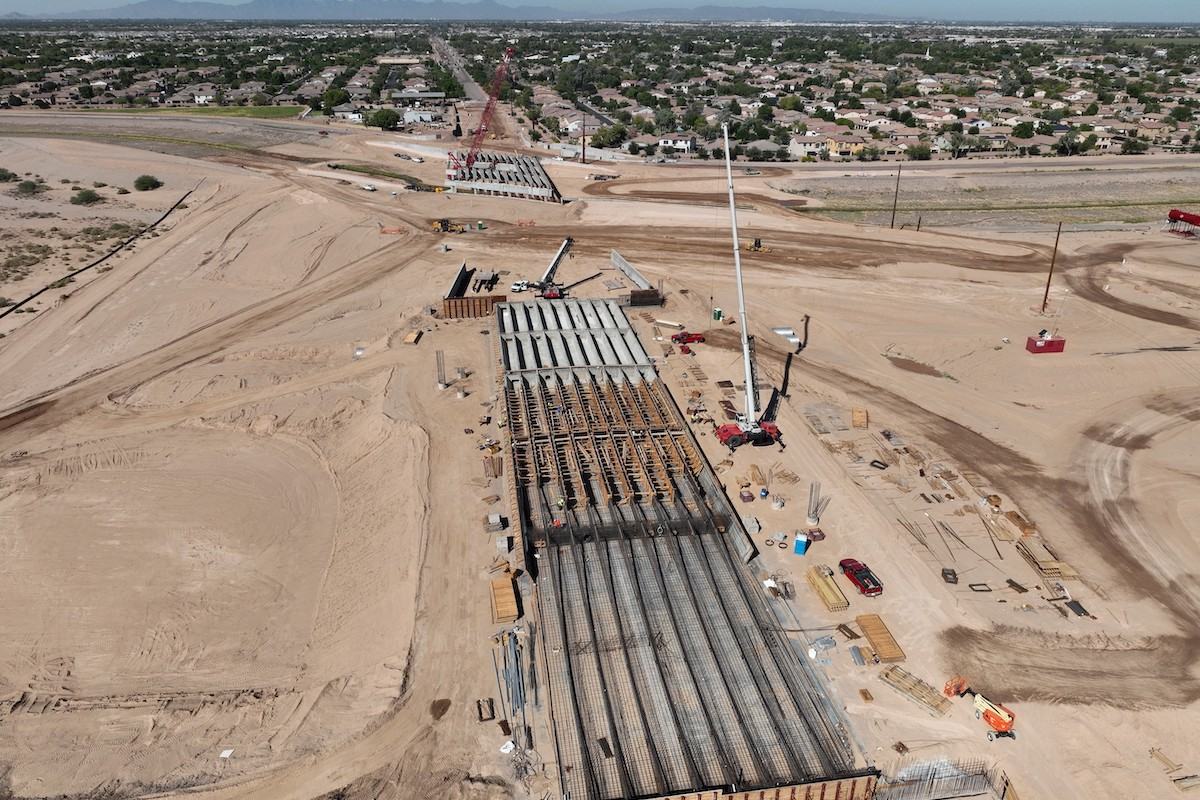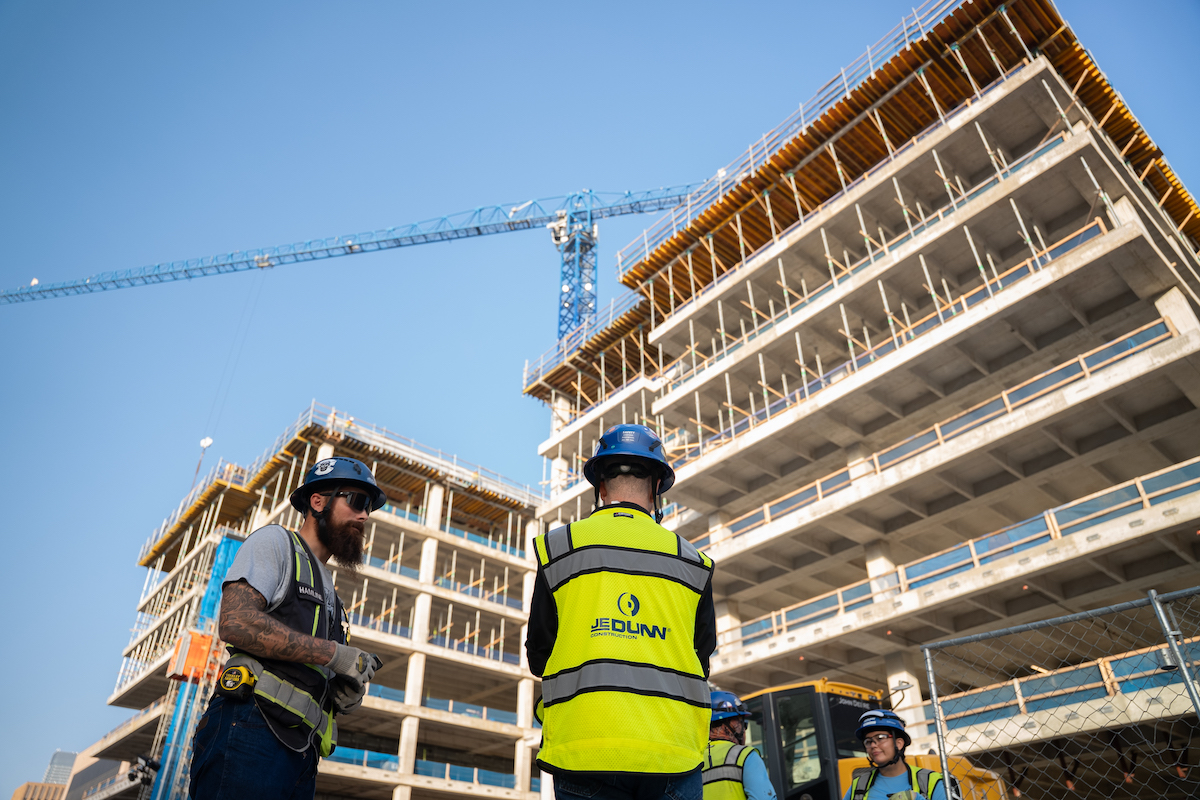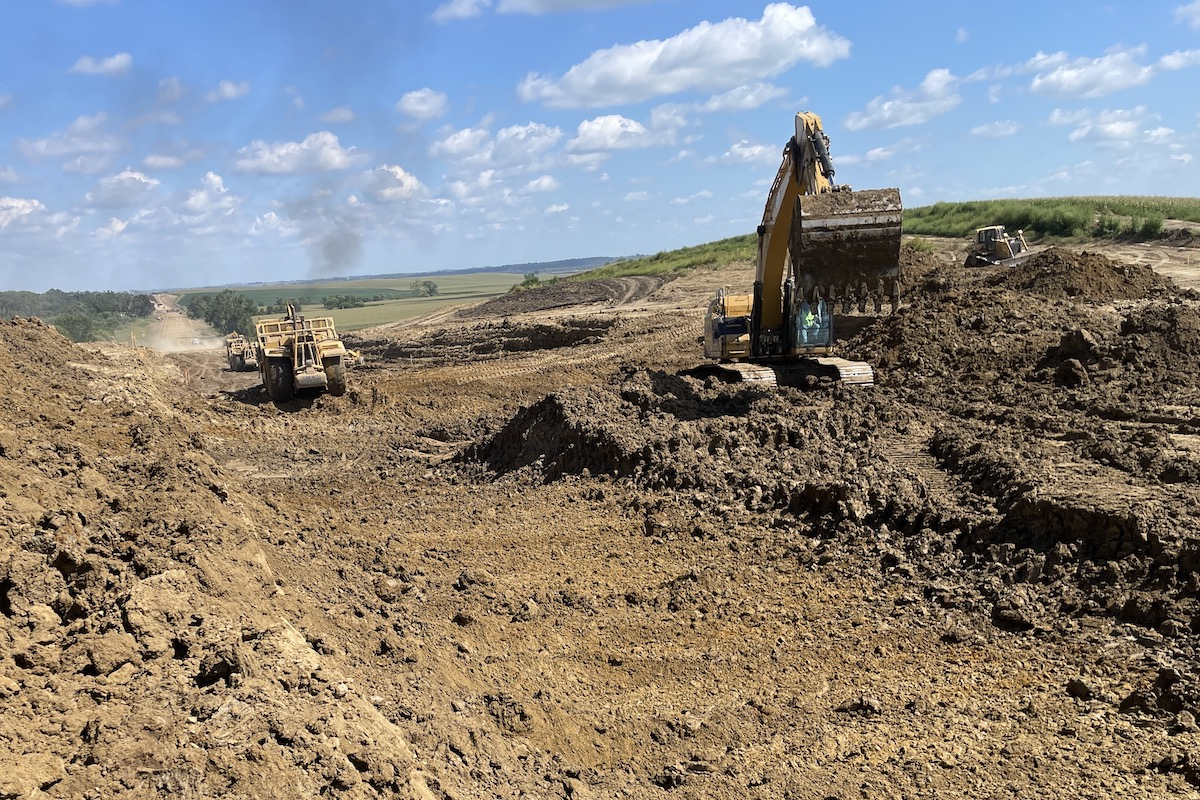When David Lincoln, Senior Vice President at Rosendin, toured a solar panel manufacturer’s facility, he took note of the robotic arms that helped move panels through the production process. That got him thinking how similar technology could help his teams on solar construction projects.
When he returned to his hotel, he did what many inventors do — he sketched ideas on a napkin. He then shared the concept with Rosendin’s research and development department.
That was 2019. Since then, Rosendin partnered with ULC Technologies in Hauppauge, New York, and developed a team of three hybrid diesel/electric robots designed to help skilled trade workers stay safer and more productive on mid- to large-scale solar construction projects.
With photovoltaic panels now weighing as much as 100 pounds, Lincoln’s idea focused on how to protect workers from the risks of heavy lifting. He originally considered replacing the backhoe on a mini excavator. Through the partnership and testing process, the design evolved into autonomous machines that work alongside skilled electricians who connect the solar panels to the grid.
ULC had a smaller, track-mounted, remote piece of machinery, designed for a different purpose but useful as a starting point.

| Your local Trimble Construction Division dealer |
|---|
| SITECH Southwest |
| SITECH West |
“Over the course of 18 months, through many, many conversations and meetings, we finally came up with a prototype that we all agreed on,” Lincoln said. “We brought it down to Texas and tried to break it. We put it to work in all kinds of weather, all kinds of conditions, and made many modifications to it.”
The robots worked at Rosendin’s 721-megawatt solar project spread over 15 square miles in Danevang, Texas. During the testing process, some modifications occurred in the field, while others required trucking the robots back to New York for changes, then back to Texas for more testing.
Eventually satisfied with the robotic arm to lift the panels, “We thought what if we build another one or two components that also run on a hybrid system to carry the modules,” Lincoln said.
They settled on two additional robots that carry pallets of 30 to 35 solar panels between the loading area and the installation location. The robotic arm, integrated into a tracked, robotic platform, picks up solar panels from one carrier and places them, while the second carrier retrieves a new load of panels so there is never any downtime.

| Your local Gomaco dealer |
|---|
| Terry Equipment |
The three-piece robotic system, along with maintenance parts, fits inside a 40-foot shipping container. When the robots arrive onsite, Rosendin downloads a KMZ map file of the project site. GPS and Lidar provide ongoing navigation for the units.
“There’s an umbilical cord that can be plugged into the robot and used manually like a game controller,” Lincoln explained. “You can set the robot in place with that, then disconnect it and it’s autonomous and will just run by itself.”
Workers have an emergency button to stop the robots if needed, but the units include their own sensors designed to stop them if something gets in the way.
Instead of pallets of modules spread out over rows of racking systems, the robots allow for micro laydown yards at the end of each row, Lincoln said.

| Your local Trimble Construction Division dealer |
|---|
| SITECH Southwest |
| SITECH West |
The robotic arm places modules within a half inch of where they need to be, then a two-person crew guides the panels into position and completes the installation with fastening hardware and electrical connections.
Without the robots, a three- to four-person crew would usually carry and install solar panels. “Typically, they’re getting 100 to 120 modules installed in a good day,” Lincoln said. However, “In an eight-hour shift, you can get 350 to 400 modules installed with a two-man crew and the robotic system.”
In remote areas and other challenging situations, the robots provide help for workforce shortages, but the major benefit is safety.
“We have individuals installing millions of 80-, 90-, 100-pound modules in a year,” Lincoln said. “We get lots of sprains and strains. But the robotic arm very easily picks up these modules, spins them, turns then, lays them down on the racking system, and then releases its suction cups.”

| Your local Trimble Construction Division dealer |
|---|
| SITECH Southwest |
| SITECH West |
In addition, the robotic carriers take away safety risks from laborers carrying the heavy modules through rows with tripping hazards. The robots never get tired, despite heat or long days.
The track-mounted units were built to traverse up to a 30-degree incline and operate in wet, muddy conditions or on rough terrain.
“We wanted to make sure we had a robust vehicle that could withstand all the conditions on a major solar project,” Lincoln said. “They’ve been out there when it’s 120 degrees, when it’s been hailing and thunderstorms and rain, and when it’s so dusty during the dry times, too.”
Ultimately, “This robotic system is a tool that enhances installation and potentially brings a project to fruition quicker,” Lincoln said. “The intent has always been from day one to not keep the robots just for ourselves.”

| Your local Trimble Construction Division dealer |
|---|
| SITECH Southwest |
| SITECH West |
Rosendin will hold a demonstration of the robotic system at a West Texas job site on April 17, 2025.
Photos courtesy of Rosendin.








